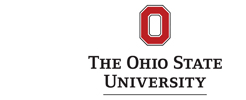'COLMARm 13C-1H HSQC, HSQC-TOCSY and TOCSY Query and Verification'
STEP2: Peak picking and peak fitting
Peak fitting is recommended only if compound quantification is planed. It may take up to several hours for a complex spectrum
Peak fitting is recommended only if compound quantification is planed. It may take up to several hours for a complex spectrum
STEP3(optional): Spectral referencing
Choose solvent: water or chloroform.
Choose compounds as references:
The server automatically the reference correction by matching the peaks patterns of selected known compounds against experimental peaks. In this process, match at least
out of known peaks.
1H: 13C:
Choose solvent: water or chloroform.
Choose compounds as references:
DSS
Alanine
Leucine
Glucose
Lactic Acid
TMS
Linoleic Acid
Cholesterol
The server automatically the reference correction by matching the peaks patterns of selected known compounds against experimental peaks. In this process, match at least
out of known peaks.
1H: 13C:
Estimated noise level of HSQC spectrum is
HSQC Lowest contour level:
= 0
Control: Brush an area to Zoom in, or remove peaks within this area. , ,
Visualization:
Control: Brush an area to Zoom in, or remove peaks within this area. , ,
Visualization:
Peak list:
Visualization options:
- Zoom scale:
- plot size:
- Contour color: Gray Colorful.
- Draw expected cross peaks from database experimental hybrid peaks or does not draw.
HSQC Lowest contour level:
= 0
TOCSY Lowest contour level:
= 0
HSQC-TOCSY Lowest contour level:
= 0
Save peak and compound information to local file
Using Space or Comma as delimiter.
Using Space or Comma as delimiter.
![]() Reference
Reference
 Questions or comments? Please feel free to contact us.
Questions or comments? Please feel free to contact us.
Acknowledgement
This web server and the research that led to it is supported by the National Institutes of Health (Grant R01 GM 066041).Most chemical shifts in COLMAR database were retrieved from the existing databases listed below, which all allow public access.
*This information is only used for the compilation of our webserver usage data.
This server is last updated at March 23 2024 08:22:49.

